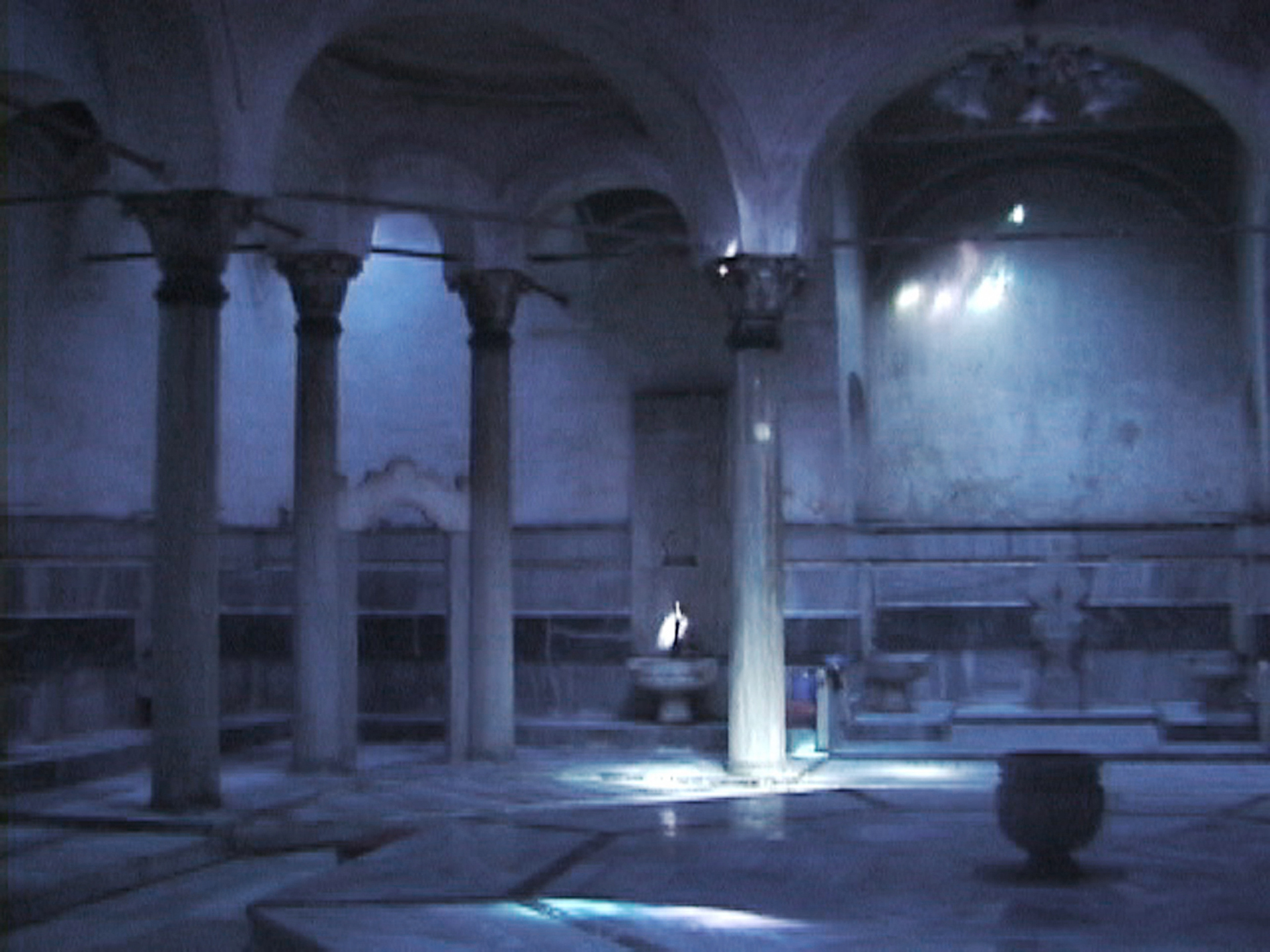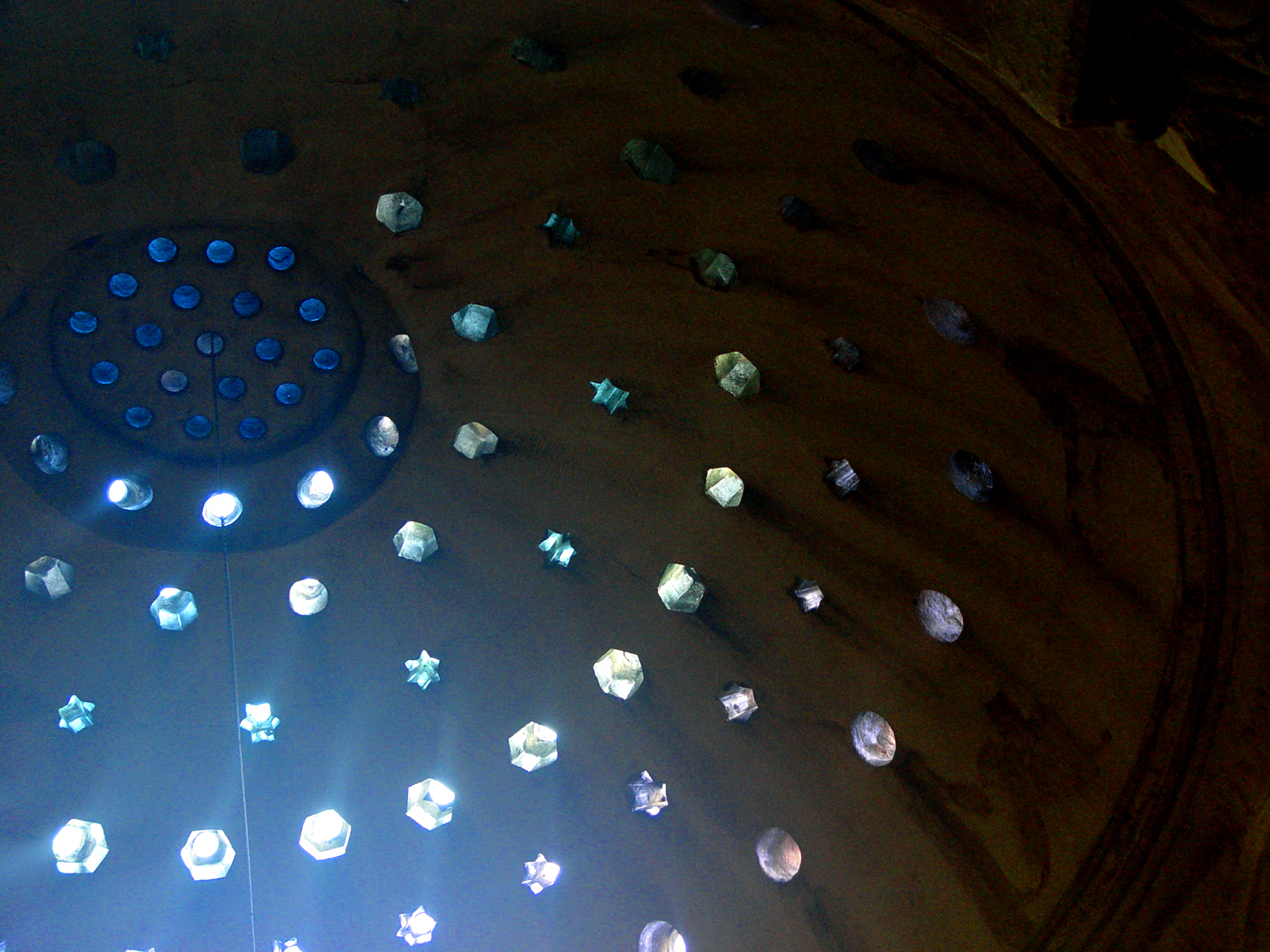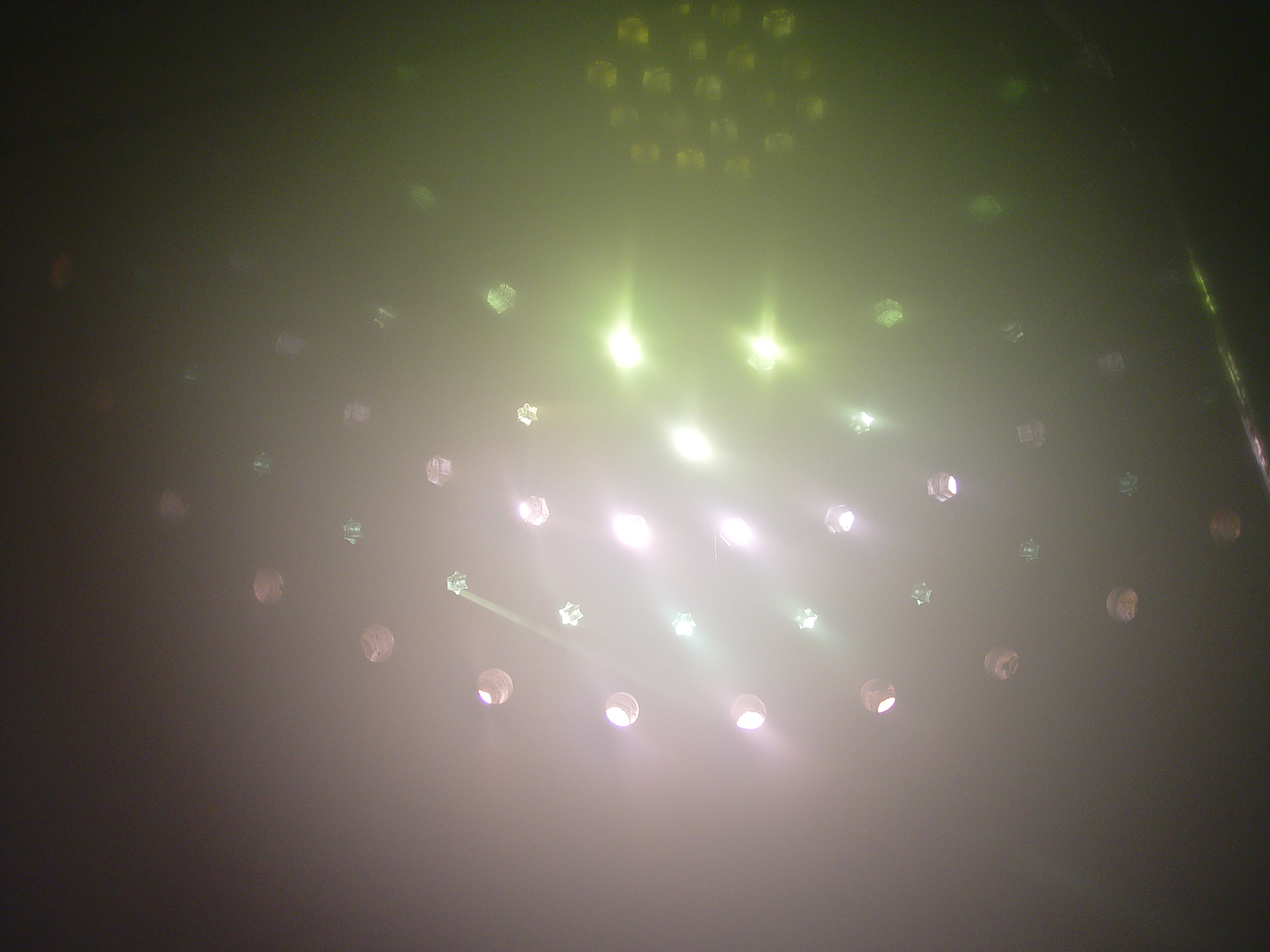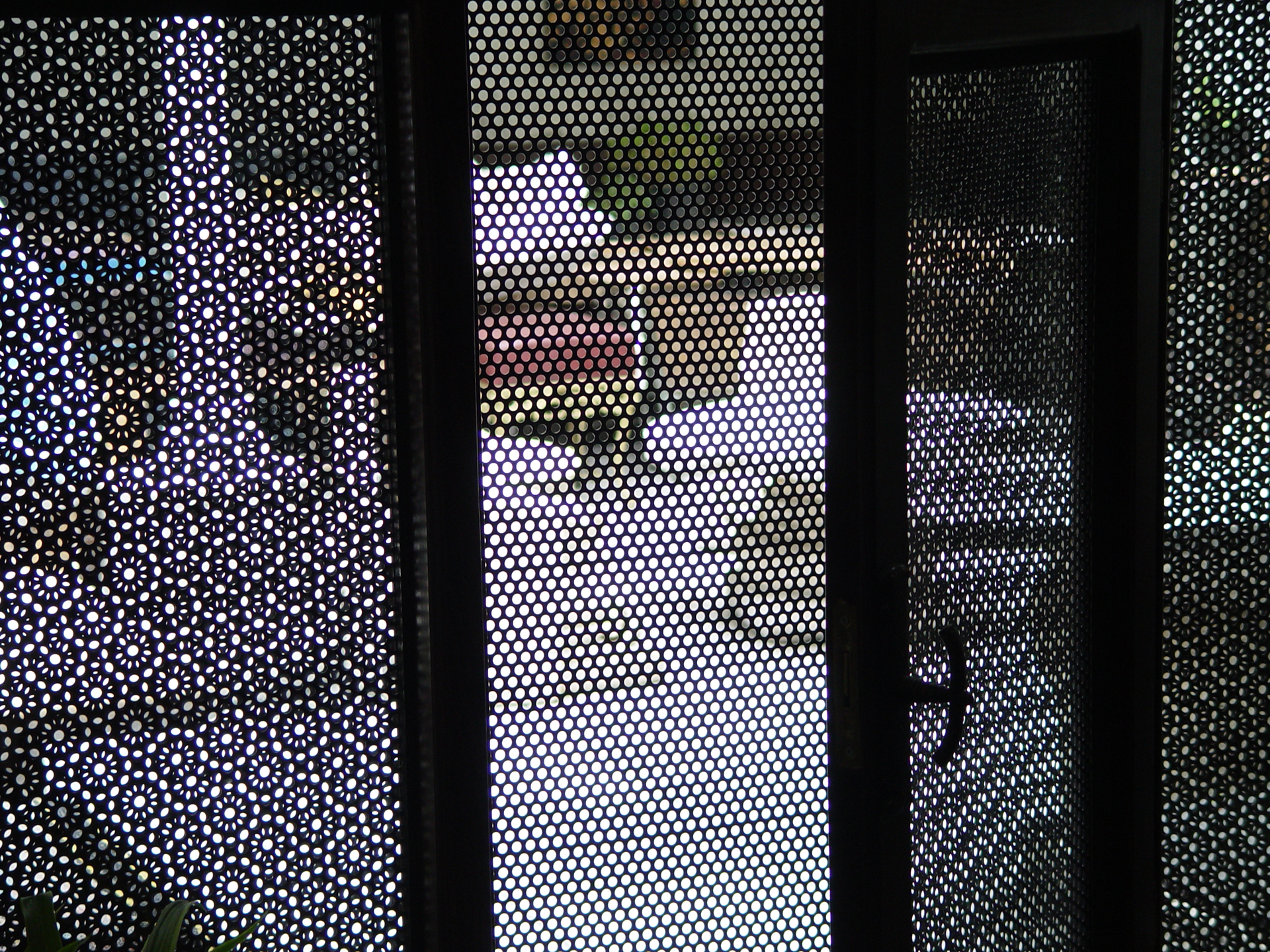Turkish Delight
2003
Turkish baths are mundane and codified spaces. Their architecture disposes spaces to guide our experience in them. Men and women are separated at the entrance, they take their clothes off, bathe, drink tea, and rest in their exclusive spaces and later reunite at the hamam‘s bar. Even for those who go there on a daily basis, the hararets‘ light, almost scenic, with steam-shaping light beams projected on marble, must be awing still.
Turkish Delight was conceived by invitation of the 8th Istanbul Biennial – Poetic Justice. Plexiglas and metal moucharabies were installed on the windows between the courtyard and the Cağaloğlu Hamamı’s bar; these were the first experiments I did with laser-cut patterns on Plexiglas. These new cutout color filters would be used in many works later, just like the effect of superimposed pegboards to generate new patterns, recurring after Turkish Delight.
In the hot-steam areas-the hararets-every natural light entrance was filtered: on the women’s side, a light composed of blues and lavander, a kind of twilight-hour atmosphere; on the men’s side, variations of yellows and amber, more sunlike.
The hamam continued to operate normally during the Biennial, as it had over the past three hundred years, and in order to visit all spaces occupied by Turkish Delight, viewers had to undress and have a steam bath.
2003







